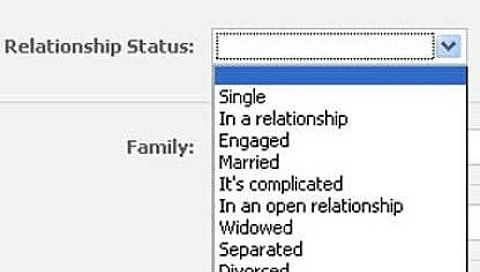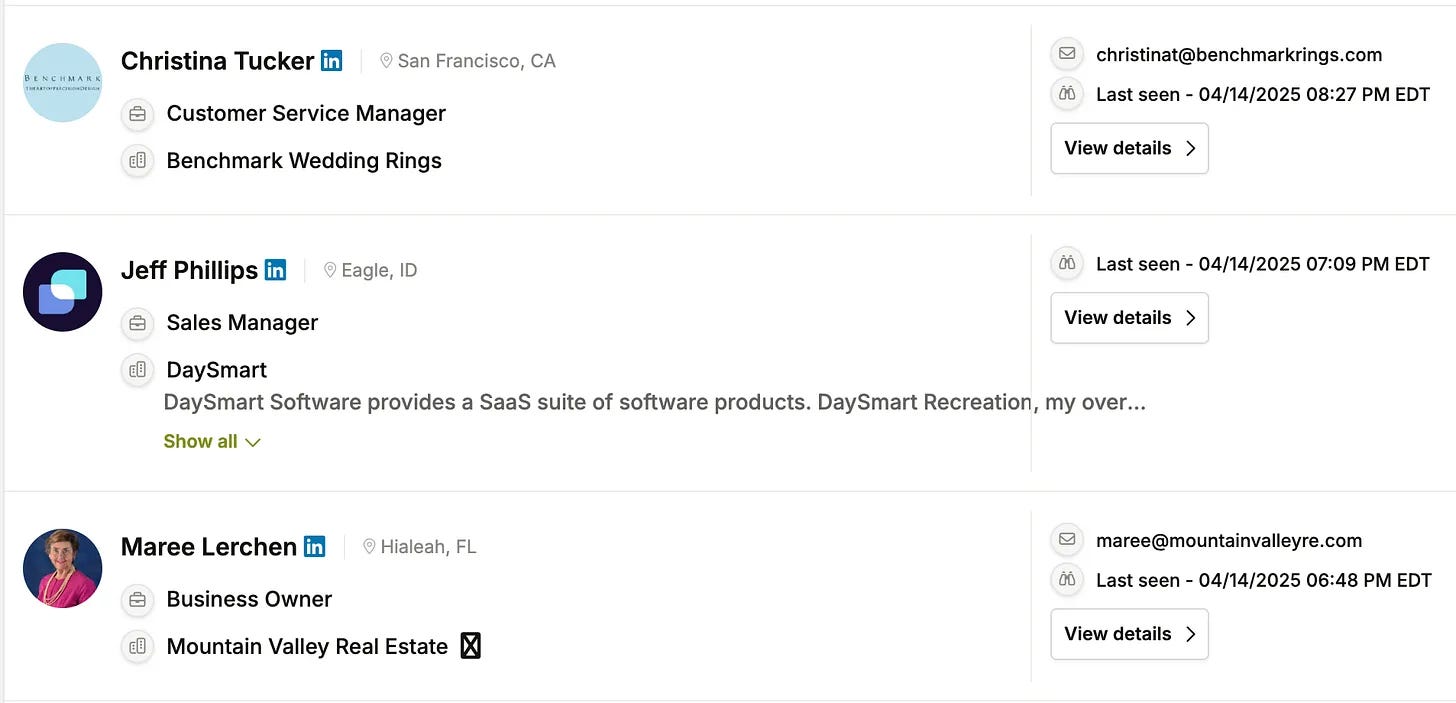Back in 2006, when I was a sophomore in high school, Facebook was the talk of the town. While the ability to connect with friends, send messages, and post pictures was cool, the one thing that had everyone talking was the “Relationship Status” feature. Virtually every high school guy had a crush on at least one (and sometimes multiple) girls and would monitor their Facebook Relationship Status like a hawk, praying it would turn from “In a relationship” to “Single” (or at least, “It’s complicated”), so they could swoop in and make their move.
When it comes to B2B marketing in 2025, the most savvy companies operate in a way that’s not so different from those horny teenagers. They constantly monitor website traffic, social media activity, personnel changes, and more to see if you’ve ‘broken up’ with your current service provider and are ‘exploring options’ or ‘open to a new relationship.’
In this article, I explain why I believe this approach, known as monitoring buyer intent signals, is the future of B2B marketing and how you can use it to grow your business. Anyone not interested in reading the full article can find a summary here.
Right person, right time
As discussed in my previous article, a well-known and frequently repeated phrase in the marketing world is that a successful marketing campaign involves targeting the “Right person with the right message at the right time.” Of all these, “the right time” is arguably the hardest, but most important, to get right.
You might find a company that is a perfect fit for your software product. But, if they just signed a 12-month contract with another provider, you’re out of luck. On the flip side, if you contacted a company that just experienced a massive data breach and pitched them on a cyber security solution, they’d be begging you to take their money.
The tradeoff in B2B Marketing
When it comes to B2B marketing, there is typically a tradeoff between optimizing for targeting “the right person” and hitting them “at the right time.” Platforms like Google Ads, which allow you to target users based on search intent, don’t provide any information about who you are targeting.
Platforms like LinkedIn, which enable you to be precise about who you are targeting, don’t provide any options to optimize the timing of your message to coincide with buyer demand. The same goes for email marketing, which historically, has involved uploading a list of relevant prospects and firing off an email sequence, with little visibility into the timing or relevance of your message to those prospects.
What are buyer-intent signals and why do they matter?
Buyer intent signals are the digital clues that indicate when a B2B prospect or account is actively considering a purchase – things like repeated website visits, content downloads, product trial usage, or even research on competitors.
With buyer intent signals and the tools to monitor and take advantage of them, you can gain deep insights into who your target customers, when they are ready to buy, and precisely what they need.
What are some examples of buyer-intent signals?
While there are many potential buyer-intent signals, the most common ones are as follows:
#1 - Company Growth & Funding Events: Rapid growth or new funding at a company can indicate budget and appetite for new tools. For example, a startup that just closed a funding round or opened a new office is likely scaling operations.
#2 - Hiring for Key Roles (e.g. Job Postings): Job openings can reveal strategic priorities. Suppose a target account is hiring for roles tied directly to your solution. In that case, it’s a strong signal of upcoming initiatives related to this area.
#3 - Company Leadership Changes: New executives often shake up strategy and consider new vendors. This is an ideal time to reach out and test the waters.
#4 - Technographic Changes: Monitoring a prospect’s tech stack can uncover intent. If a target adds a complementary technology or replaces a competitor, it’s a strong buying signal. For example, seeing that a company’s website recently added marketing automation tags or analytics tools suggests they are ramping up go-to-market efforts and may need adjacent solutions.
#5 - Competitor Engagement & Industry Buzz: Prospects researching or interacting with your competitors often indicate interest in your category. Suppose prospective firm employees start following your competitors on LinkedIn or Twitter or comment on a competitor’s content. In that case, it’s a breadcrumb that they’re exploring solutions.
#6 - Social Media “Help” Signals: B2B buyers often vocalize pain points on social networks or forums. When a prospect “cries out for help” online with a problem you can solve, that’s a golden intent signal. For instance, a VP of Engineering might post, “Struggling to manage 100+ microservices, any good tooling suggestions?”.
#7 - Website Engagement from Anonymous Buyers: First-party web activity can inform who to contact, even in outbound. Suppose an unknown visitor from a target account has frequently visited your website, especially high-intent pages like pricing, product features, or case studies. In that case, it’s a strong buying signal. It’s even more potent if multiple individuals from a target account visit your website in rapid succession.
#8 - Social Engagement With Your Posts: Anyone in your target ICP who engages with your company’s LinkedIn posts or those of your leadership team could strongly indicate they are in the market for a solution.
#9 - Product Champion Switching Roles: If a product champion at one of your target accounts switches roles, this is a prime opportunity to congratulate them and ask whether their new company could be a good candidate for your solution.
#10 - Closed Lost Revival: It’s ideal to review and attempt to revive closed lost opportunities when a past product champion joins, a new executive is hired, a key decision-maker at the company visits your website (high-value pages), or the company gets new funding.
What tools help to monitor and take advantage of buyer-intent signals?
Companies like 6sense, Demandbase, ZoomInfo, Hubspot, and Salesforce are good options if you are looking for a full-suite sales solution that also handles buyer-intent signals.
If you are looking for solutions purely focused on buyer-intent signals, Usergems and Pocus are two of the best I’ve found. They have strong libraries of buyer-intent playbooks here and here.
Suppose you want to craft custom solutions to monitor and act on buyer-intent signals. In that case, you can use tools like N8N, RB2B, Apify, and Phantombuster, which I’ve covered exhaustively in previous articles.
Clay also has waded deeper into this space with their recent acquisition of Avenue. I’m sure they will be rolling out some interesting buyer intent signal solutions soon.
Conclusion
Buyer intent signals allow you to act on real, meaningful context instead of relying on timing guesswork or static lead lists. As channels become crowded and buyers more selective, understanding timing and intent quickly becomes a core advantage. It allows your team to prioritize the proper accounts, tailor outreach with relevance, and connect when interest is highest.
If you liked this content, please click the <3 button on Substack so I know which content to double down on.
TLDR Summary
This article explores the power of monitoring buyer intent signals in B2B marketing, which helps companies identify when prospects are ready to buy. It explains how signals like company growth, hiring changes, competitor engagement, and social media activity can guide sales teams in targeting the right accounts at the right time. The article also highlights tools and strategies for tracking and leveraging these signals to enhance marketing effectiveness.
Key Steps and Insights
Why "Right Time" Matters in B2B Marketing
Timing is critical in B2B marketing; targeting prospects when they’re ready to buy makes all the difference.
Traditional platforms like Google Ads and LinkedIn don't always help with timing, whereas buyer intent signals provide real-time insights.
What Are Buyer-Intent Signals?
Buyer intent signals are digital clues that indicate when a prospect is actively considering a purchase, such as website visits, job postings, or competitor engagement.
These signals allow marketers to tailor outreach based on when prospects are most likely to make a buying decision.
Examples of Buyer-Intent Signals
Company Growth & Funding: Signals a budget for new tools.
Job Postings: Reveals upcoming initiatives.
Leadership Changes: Often prompts vendors to explore new options.
Technographic Changes: Indicates readiness for complementary tools.
Social Media “Help” Signals: Reveals pain points that your solution can address.
Tools for Monitoring Buyer-Intent Signals
Full-suite solutions like 6sense, Demandbase, and Salesforce can help monitor intent.
For more specialized solutions, Usergems and Pocus provide excellent buyer-intent signal tracking.
Custom solutions can be built with tools like N8N, Apify, and Phantombuster.
Conclusion
Monitoring buyer intent signals is a game changer in B2B marketing, enabling businesses to act on real-time data rather than guessing timing or relying on static lists. By understanding these signals and using the right tools, sales teams can prioritize high-intent accounts, tailor their messaging, and engage at the most opportune moment—ultimately leading to better-targeted outreach and increased sales effectiveness.













Love the intro and what a sharp breakdown of buyer intent signals and how they're reshaping sales strategy. Great read!